1. The Hidden Music in The Last Supper
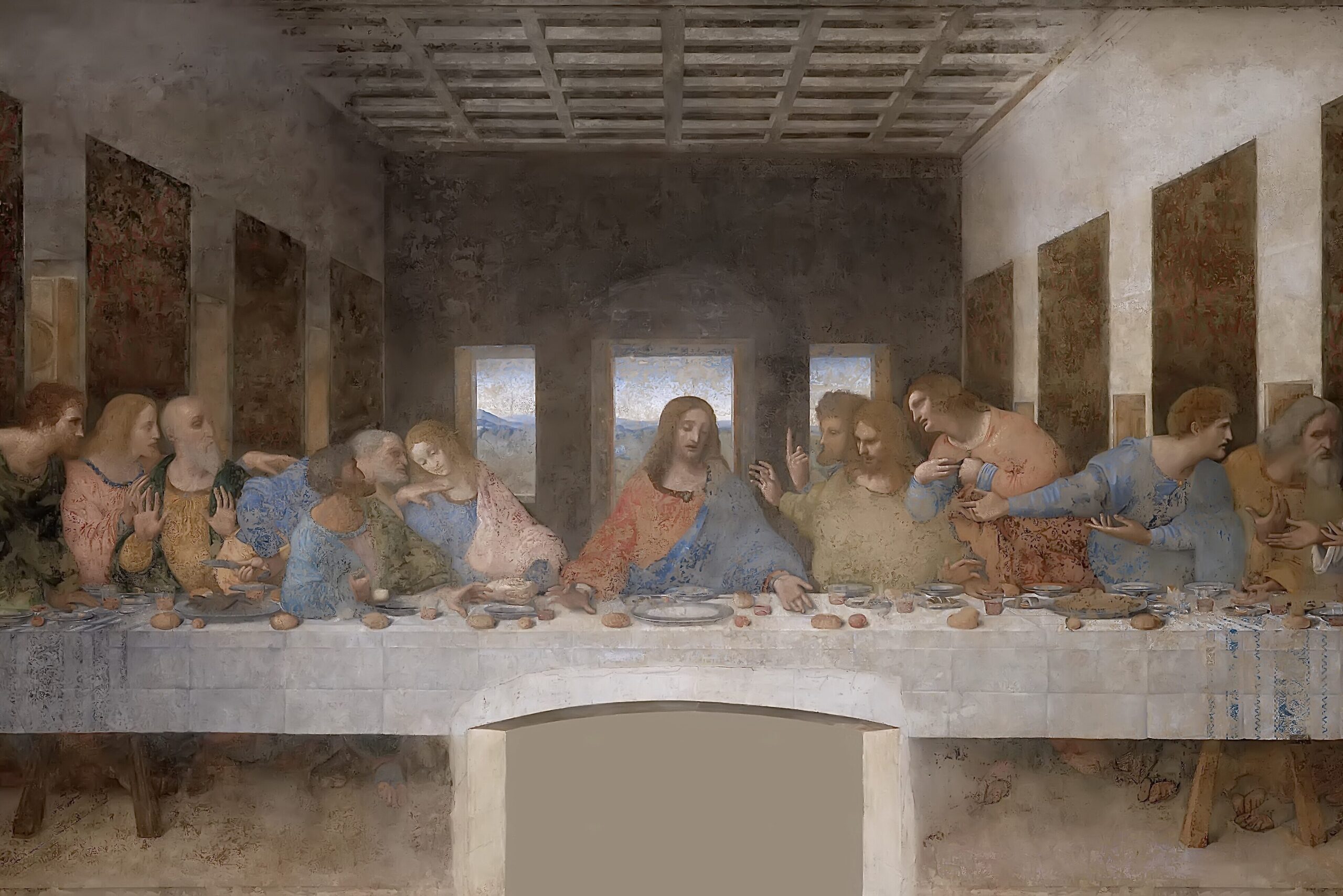
Leonardo da Vinci was a genius in more ways than one, and he may have left a hidden melody in The Last Supper. An Italian musician discovered that if you draw musical notes on the lines formed by the bread and hands of Jesus and his disciples, it creates a short composition. When played, the music has a solemn, hymn-like quality, which feels fitting given the painting’s subject. Da Vinci had an interest in music, so it’s not far-fetched to think he might have encoded a secret tune in one of his most famous works. Whether it was intentional or just a coincidence, it’s a fascinating possibility says Live Science.
The painting has long been analyzed for hidden meanings, but this musical discovery adds another layer. Some believe it could be a nod to da Vinci’s belief in the harmony between art and science. Others think it might have been a way for him to communicate a deeper, spiritual message through sound. Whatever the case, it’s just another example of how much mystery is packed into da Vinci’s masterpieces.
2. The Skull in The Ambassadors
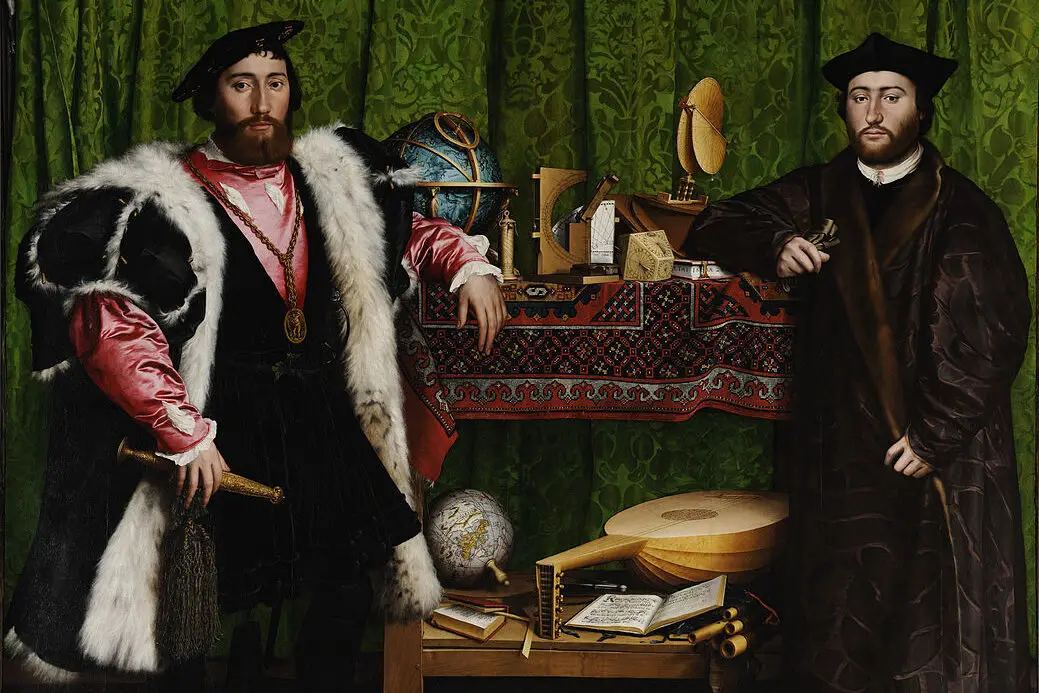
At first glance, Hans Holbein’s The Ambassadors seems like a simple double portrait. But when you look at the bottom of the painting from a certain angle, you’ll notice a strange smudge turns into a skull. This is an example of anamorphic perspective, a technique Holbein used to hide a message in plain sight. The skull serves as a memento mori, a reminder of death and the fleeting nature of life. The two men in the portrait appear powerful, but the skull suggests that death comes for everyone, no matter their status shares Big Think.
This eerie addition makes the painting feel a little haunting. Some believe Holbein was reminding the viewer not to get too caught up in worldly success. Others think the skull was a personal message meant for someone specific. Either way, it’s a clever use of perspective and symbolism that adds depth to an already stunning work of art says Artsy.
3. The Alien in Saint Wolfgang and the Devil
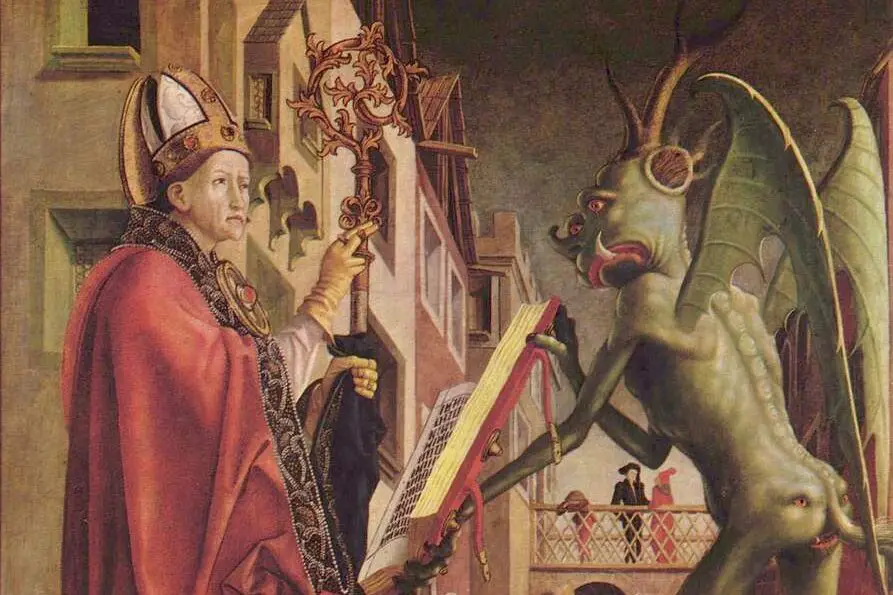
Michael Pacher’s Saint Wolfgang and the Devil is a classic religious painting from the 15th century, but some viewers have noticed something odd about the devil. Instead of looking like a traditional demon, he has an elongated head, large dark eyes, and an almost otherworldly appearance. Some say he looks suspiciously like the stereotypical image of an alien. This has led to wild theories that Pacher may have been influenced by something otherworldly adds the US Sun.
More realistically, his devil design was likely inspired by medieval depictions of demons and monsters. Still, it’s strange how much it resembles what modern pop culture considers an alien. It makes you wonder if certain ideas about extraterrestrials have been around for longer than we think. Whether it’s just a coincidence or something more, it’s an intriguing detail hidden in a centuries-old painting shares Ranker.
4. The Number 666 in The Creation of Adam
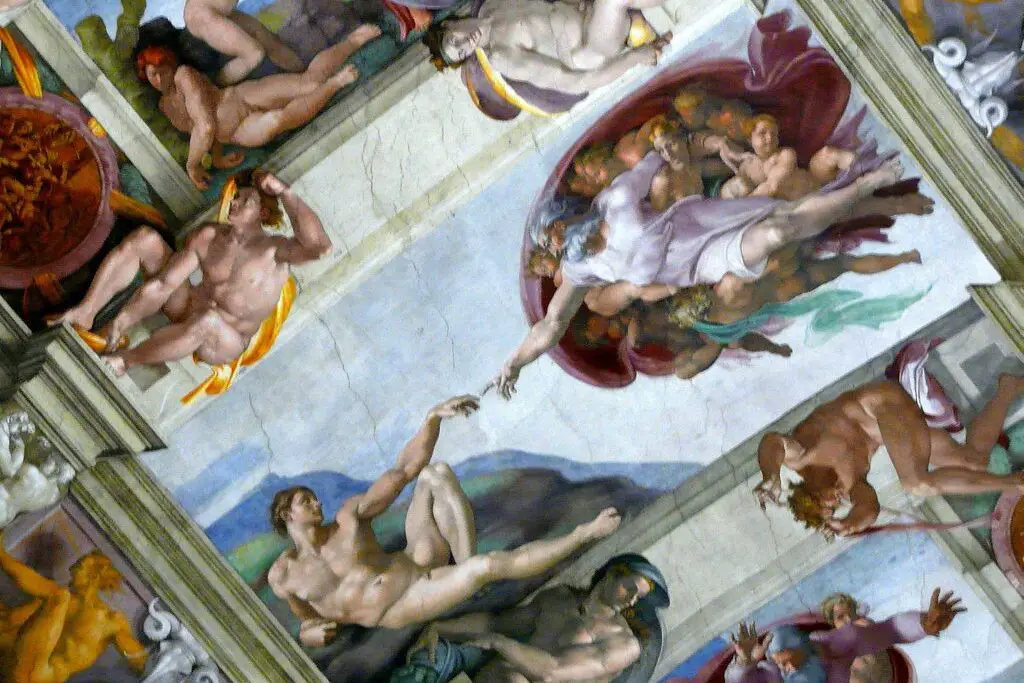
Michelangelo’s The Creation of Adam is one of the most famous images in the world, but some believe it contains a hidden warning. When you look closely at God’s outstretched arm and the folds of his robe, some interpret the shapes as forming the number 666. This number is often associated with the devil in Christian belief, leading to speculation that Michelangelo was making a subtle statement. Given his known conflicts with the Church, it’s possible he was sneaking in some hidden criticism.
Others argue that this interpretation is a stretch and that the numbers are purely coincidental. Still, Michelangelo was known for his anatomical accuracy and hidden messages, so it’s not impossible that he placed something symbolic within the painting. Whether or not it’s intentional, it adds another layer of mystery to an already iconic piece. It just goes to show that even the most familiar artworks might have secrets lurking beneath the surface.
5. The Hidden Self-Portrait in The Arnolfini Portrait
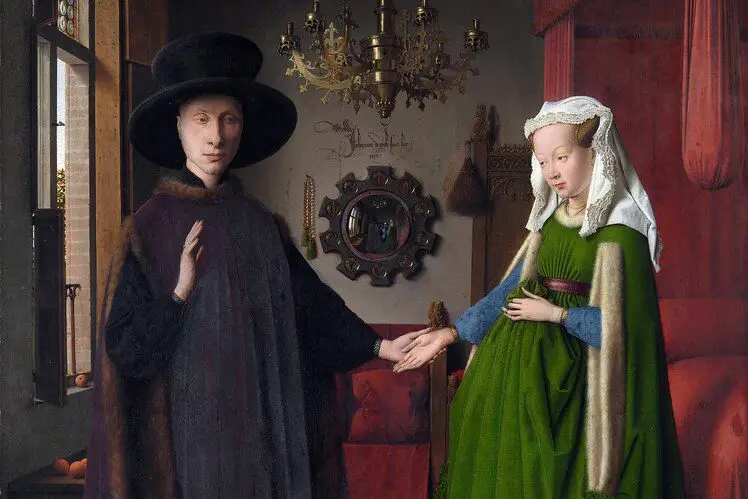
Jan van Eyck’s The Arnolfini Portrait is full of symbolism, but one of its most intriguing details is hidden in the mirror at the back of the room. If you look closely, you’ll see two tiny figures reflected in the glass. One of them is believed to be Van Eyck himself, subtly inserting his presence into the scene. It’s a clever way for the artist to sign his work without making it obvious.
The inscription above the mirror reads “Jan van Eyck was here,” making it even clearer that he left his mark. This little trick makes the painting feel almost interactive, as if Van Eyck is watching both the scene and the viewer. It’s a reminder that artists have been playing with perspective and self-representation for centuries. Even in the 15th century, painters were finding ways to sneak themselves into their own work.
6. The Anatomical Brain in The Creation of Adam
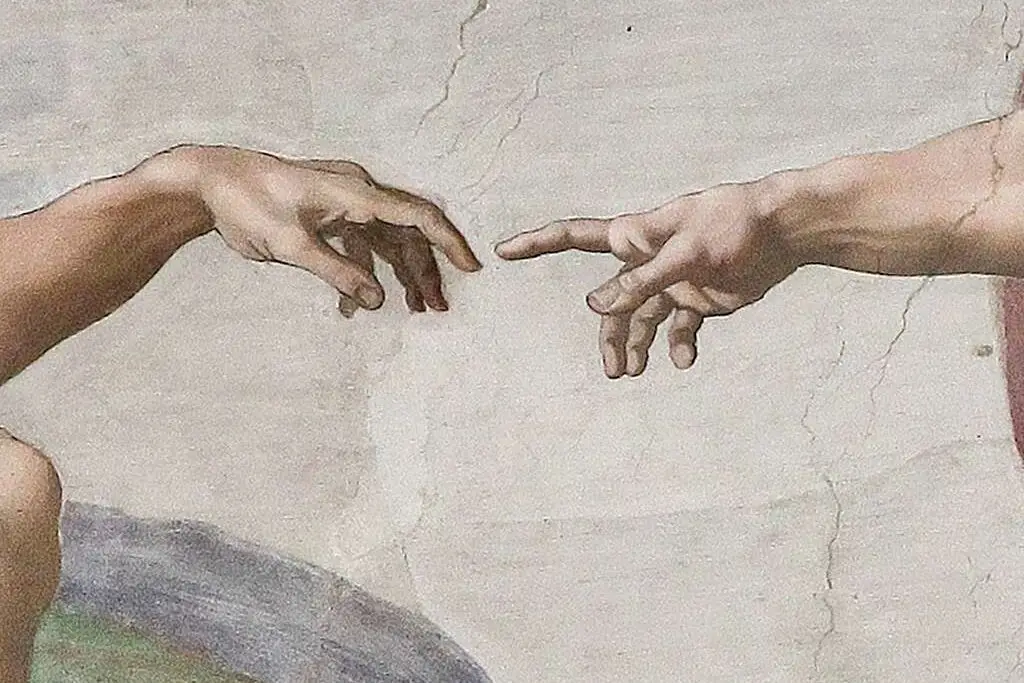
Michelangelo’s The Creation of Adam contains more than just religious symbolism. Some experts believe the shape formed by God’s cloak and the surrounding figures actually resembles the human brain. This theory suggests Michelangelo, who had a deep knowledge of anatomy, might have been making a statement about intellect. Some even interpret it as implying that God is granting Adam intelligence rather than just life.
Given Michelangelo’s fascination with science, it’s entirely possible he embedded a hidden reference to the human brain in his work. The folds and curves align surprisingly well with the structure of the brain when compared side by side. If true, it would be a bold statement for the time, blending religious themes with scientific knowledge. It’s yet another example of Michelangelo’s layered approach to his art.
7. The Hidden Figure in Madonna with Saint Giovannino
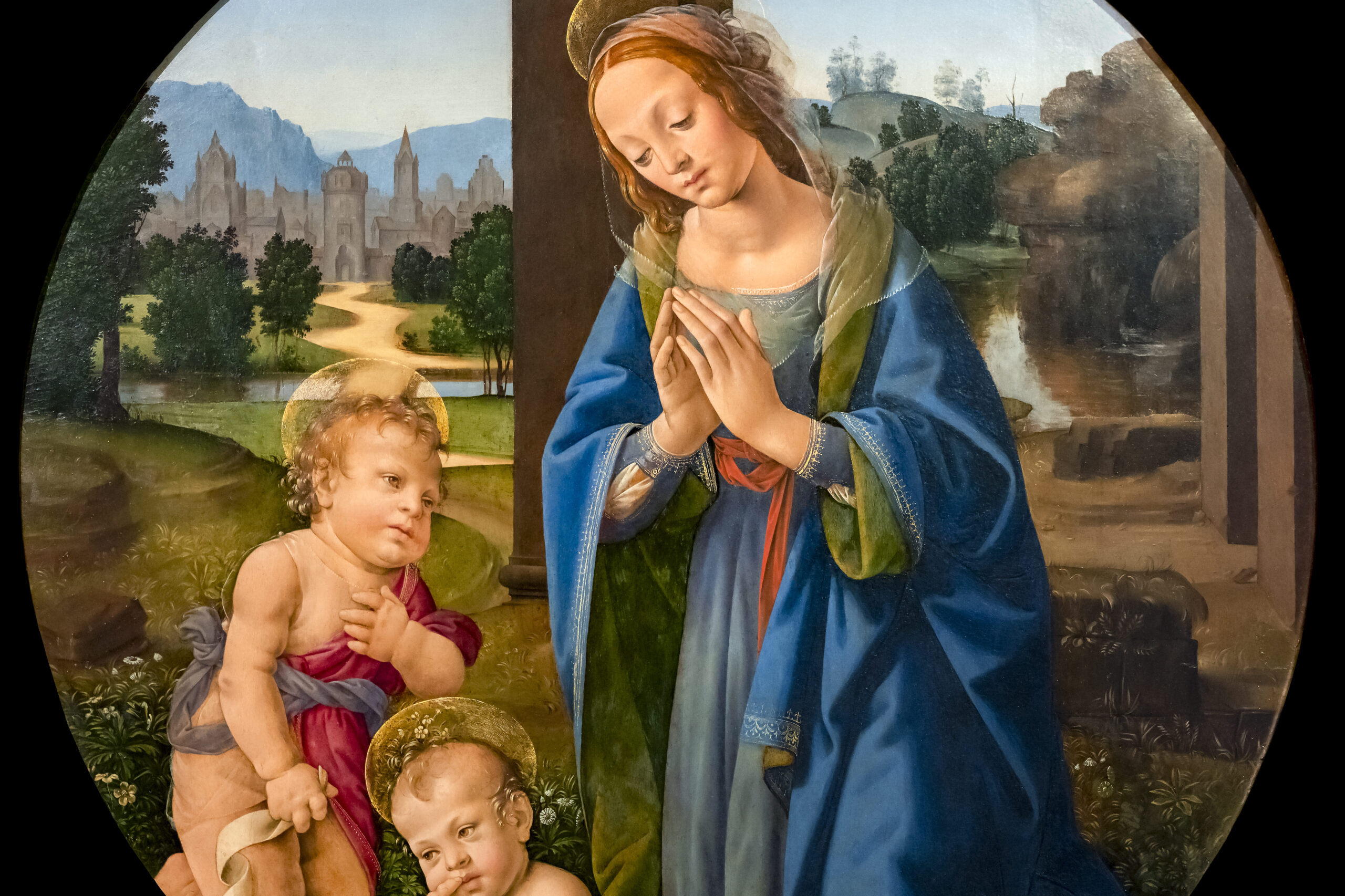
Domenico Ghirlandaio’s Madonna with Saint Giovannino has an odd little detail in the background. If you look closely, you’ll see a tiny object floating in the sky behind the Madonna. It looks suspiciously like a UFO, and there’s even a small man in the background shading his eyes as if staring up at it. This has fueled theories that Ghirlandaio may have painted an extraterrestrial encounter.
More likely, the object is meant to be an angel or divine symbol, as similar imagery appears in other Renaissance works. Still, the shape and placement are unusual enough to spark curiosity. Whether it’s a coincidence or something more intentional, it’s one of those details that keeps art lovers guessing. It’s proof that sometimes the most interesting parts of a painting are hidden in the background.
8. The Morse Code in Salvator Mundi
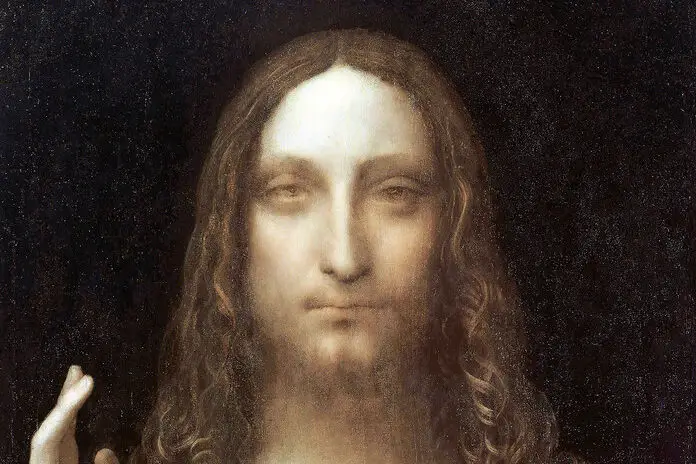
Leonardo da Vinci’s Salvator Mundi might hold a secret message written in Morse code. Some experts believe the curls in Jesus’ robe resemble coded dots and dashes. If deciphered, they could reveal a hidden message embedded by da Vinci himself. This wouldn’t be surprising, given his fascination with secret codes and symbols.
While the exact meaning is debated, some believe it could relate to religious teachings or da Vinci’s personal beliefs. Others think it might be a mathematical or scientific reference. Regardless, the idea of da Vinci sneaking Morse code into his work centuries before its official invention is fascinating. It’s just another reason why his paintings continue to spark debate and intrigue.
9. The Hidden Falcon in Man with a Glove
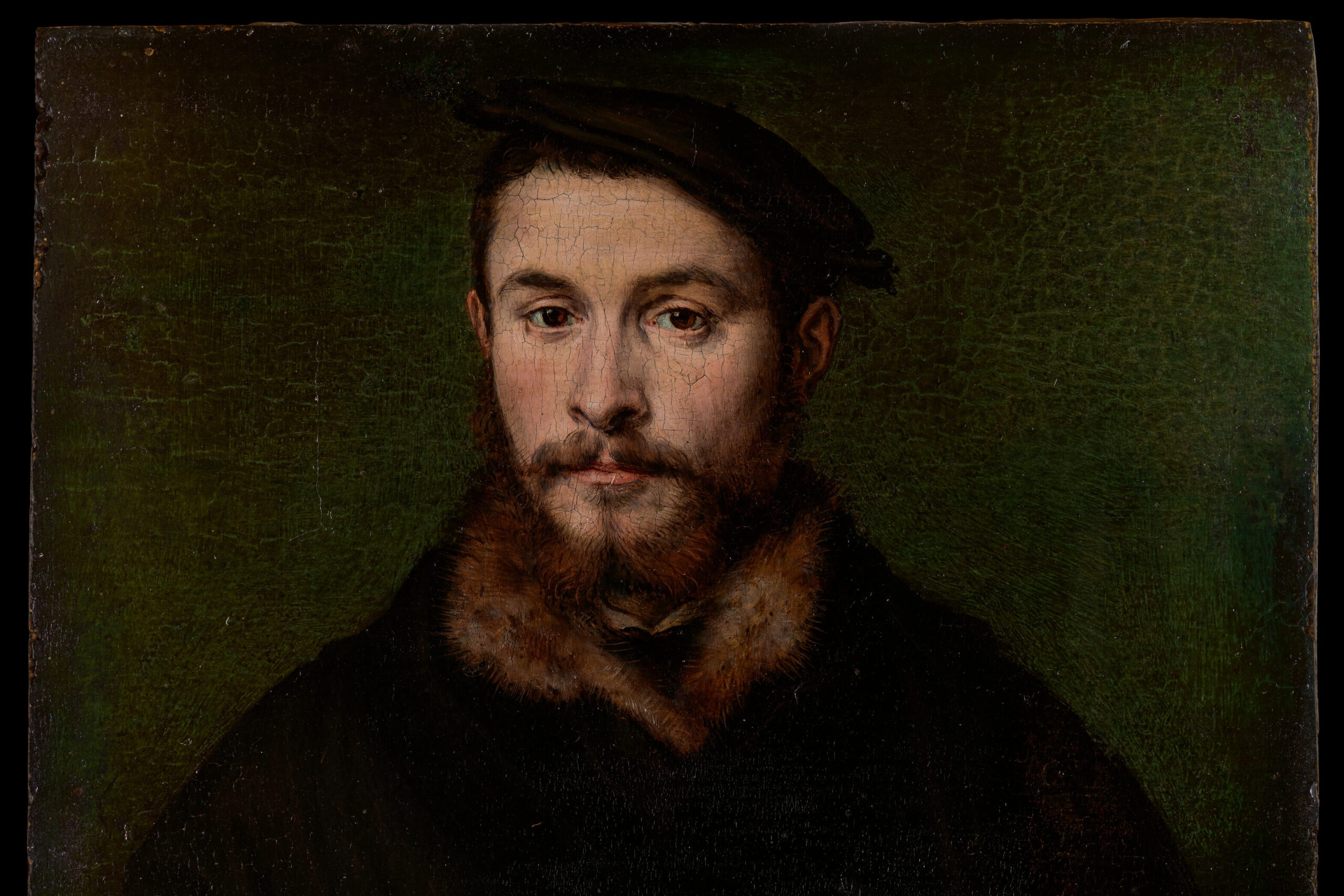
Titian’s Man with a Glove may seem like a straightforward portrait, but some art historians believe it holds a subtle message. The man’s glove is oddly positioned, and some suggest it actually forms the shape of a hidden falcon. In Renaissance symbolism, falcons often represented nobility, ambition, and vision. If Titian included this detail intentionally, it could be a hint about the man’s status or personality.
Some also believe the glove itself is a coded reference. During the Renaissance, gloves were sometimes associated with power and control. The way the man holds it might suggest he has authority over something unseen. Whether or not the falcon theory is correct, it’s clear that Titian put a lot of thought into every detail of his portraits. This just adds another layer of mystery to an already enigmatic painting.
10. The Hidden Faces in The Old Guitarist
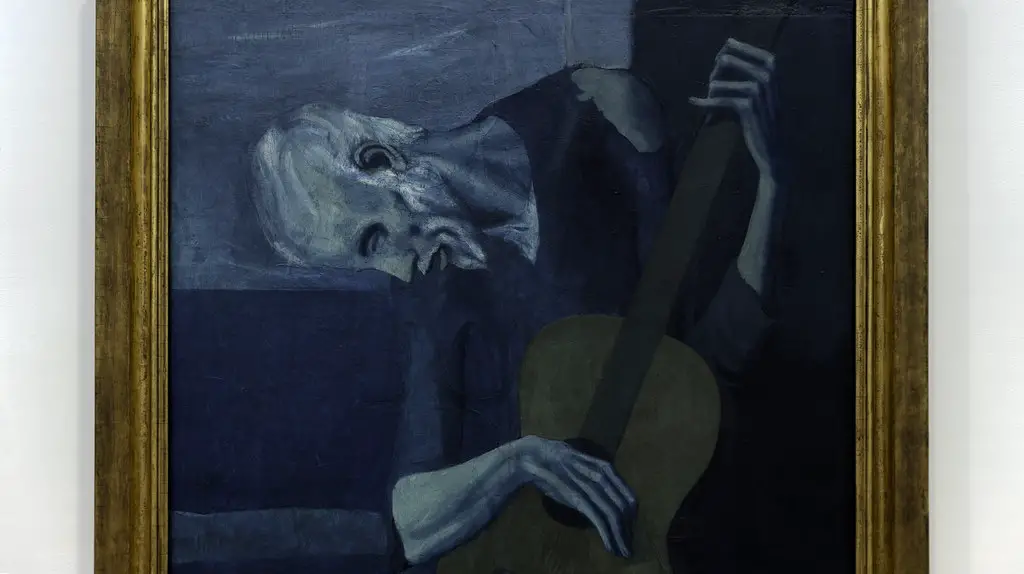
Pablo Picasso’s The Old Guitarist is a haunting piece from his Blue Period, but there’s more to it than meets the eye. X-rays of the painting have revealed hidden figures beneath the surface, including a woman’s face. Picasso often reused canvases, so it’s likely this was an earlier painting he painted over. However, some believe the ghostly traces of these hidden figures add to the melancholy feeling of the artwork.
This discovery has led to speculation about the identity of the lost figures. Were they part of a completely different painting, or did Picasso change his mind mid-creation? Whatever the case, it’s fascinating to think about what stories might be lurking beneath the surface of famous paintings. It also gives us a glimpse into the artist’s creative process and how ideas evolved over time.
11. The Mathematical Secret in The School of Athens
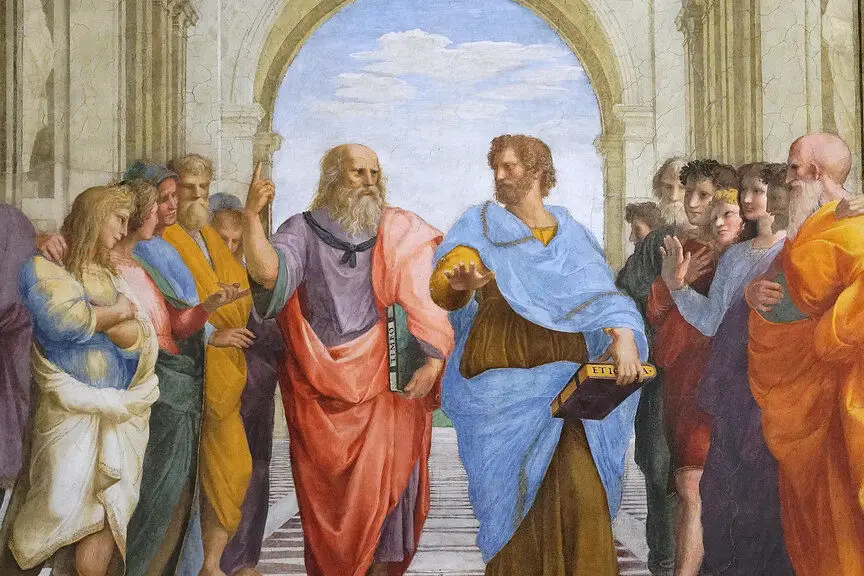
Raphael’s The School of Athens is already a masterpiece packed with famous philosophers, but some believe there’s a hidden mathematical message. The arrangement of figures and architectural elements follows the Golden Ratio, a principle often associated with beauty and harmony. Some art historians think Raphael used this ratio deliberately to enhance the painting’s sense of balance.
Beyond the math, some also believe he subtly included a self-portrait among the philosophers. One of the figures in the foreground, believed to represent the painter Apelles, bears a striking resemblance to Raphael himself. If true, it’s a clever way of inserting himself into a discussion about knowledge and wisdom. It just proves how much thought went into every aspect of this iconic work.
12. The Hidden Feminine Figure in The Mona Lisa
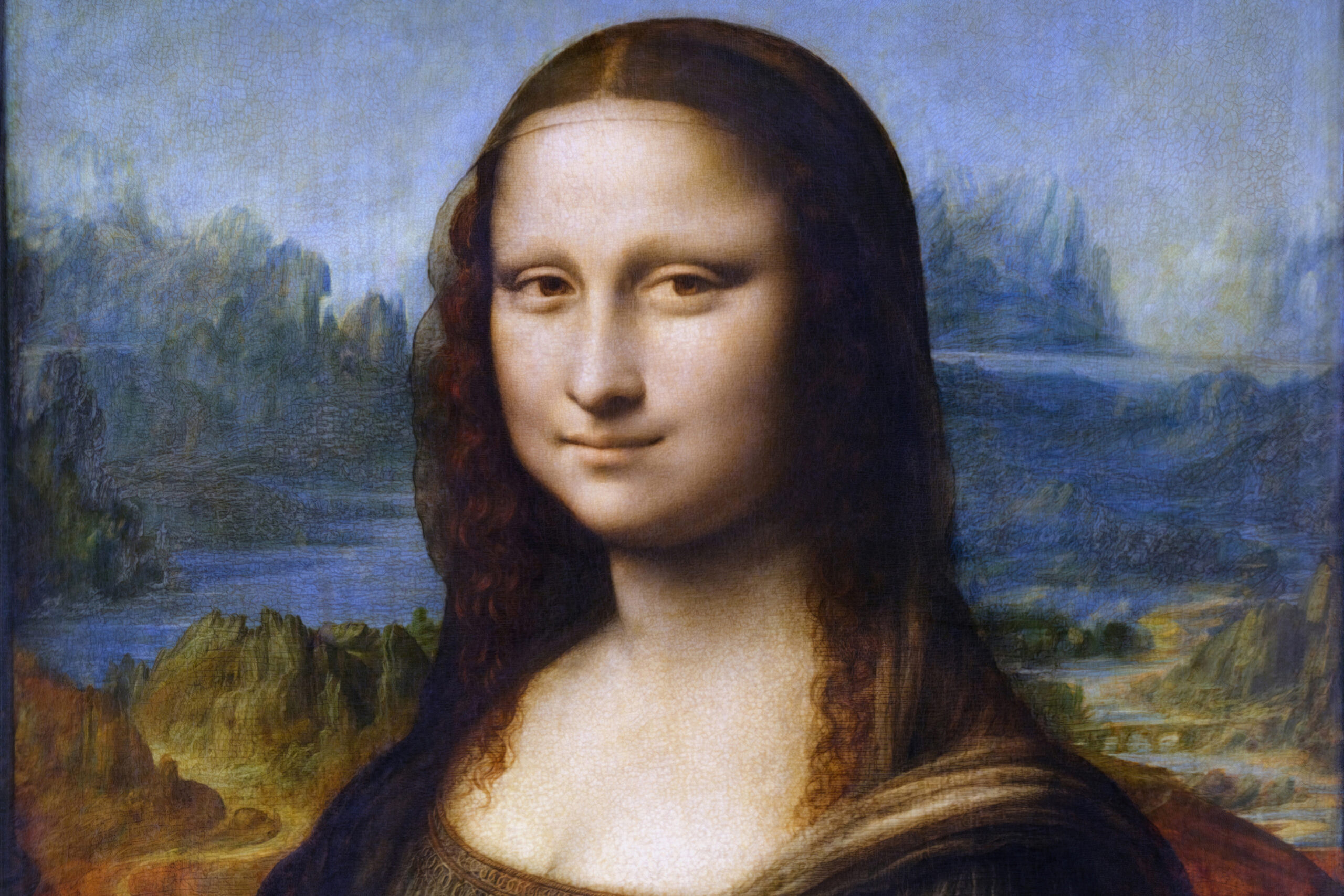
The Mona Lisa is already a painting filled with mystery, but some researchers believe there’s an entirely different portrait hidden beneath the surface. Scans of the painting have revealed layers beneath the final version, including what appears to be a different woman’s face. Some believe this was an earlier version of the portrait that da Vinci later altered. Others think it might have been a different commission altogether.
This has sparked theories that the Mona Lisa isn’t just one painting, but a combination of multiple versions. Some even wonder if the changes were made for symbolic reasons. Da Vinci was known for his constant revisions, so it wouldn’t be surprising if he kept modifying the work over time. It only adds to the enduring mystery of the world’s most famous painting.
13. The Hidden Self-Portrait in The Night Watch
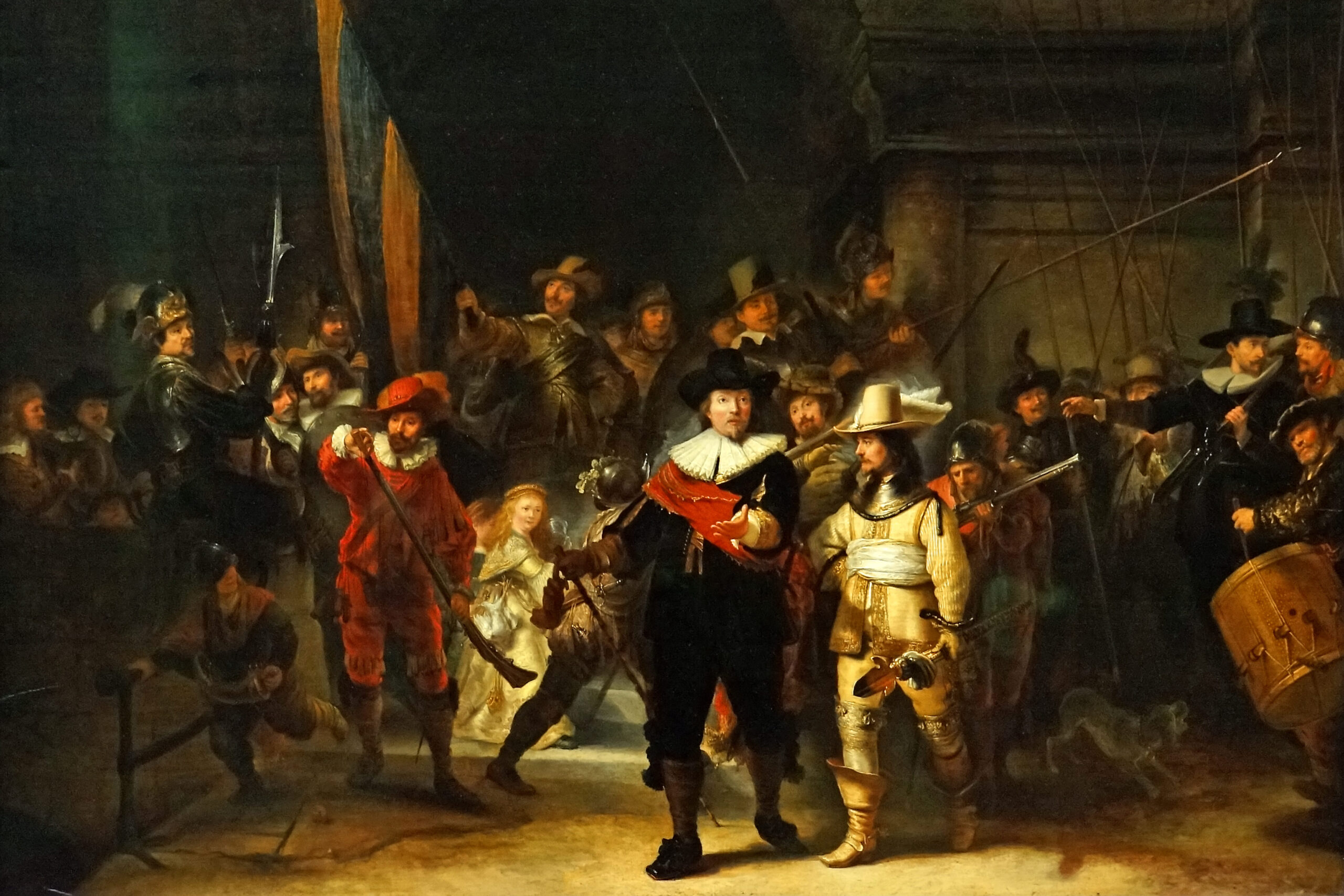
Rembrandt’s The Night Watch is full of dramatic lighting and movement, but if you look closely, you might spot the artist himself. In the background, partially obscured by shadow, there’s a small face that some believe is Rembrandt’s self-portrait. He was known for inserting himself into his paintings, sometimes in subtle ways. This could be a playful way of marking his presence in one of his greatest works.
Some art historians believe this self-portrait is symbolic, representing the artist as an observer of history. Others think it might have been a personal touch, included for his own amusement. Either way, it’s a fun detail that makes the painting even more intriguing. It’s a reminder that artists have been sneaking Easter eggs into their work long before it became trendy.
14. The Da Vinci Code in The Adoration of the Magi
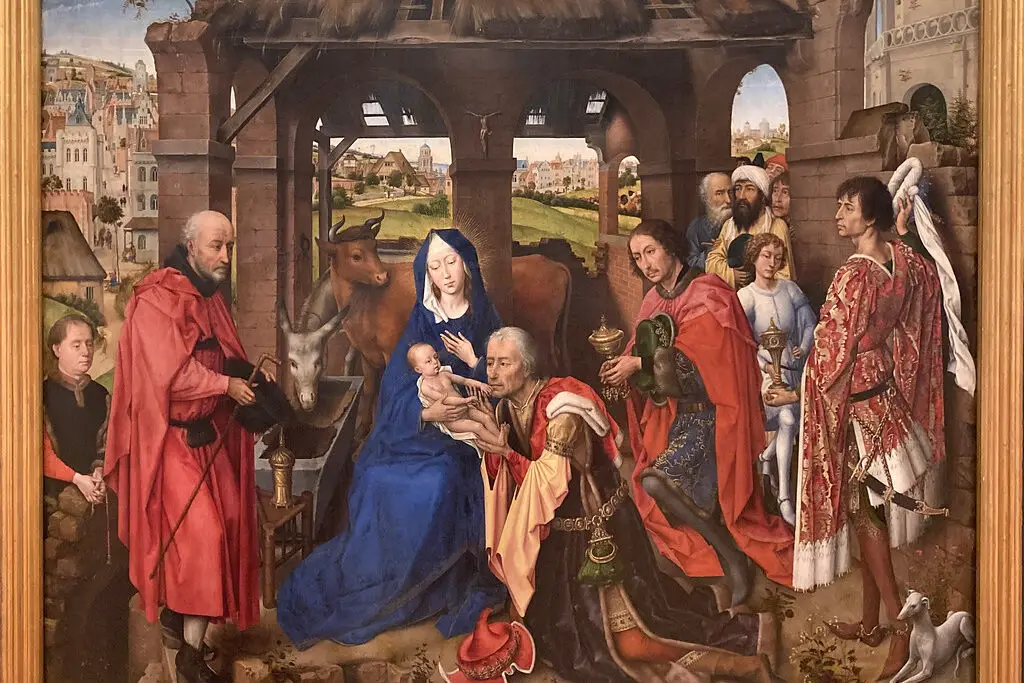
Leonardo da Vinci’s The Adoration of the Magi is an unfinished masterpiece, but even in its incomplete state, it’s packed with mysterious details. Some believe the chaotic background, filled with strange figures and crumbling architecture, is actually a hidden critique of the Church. Others think the unusual gestures of the people in the painting may contain a secret code.
Da Vinci was known for his love of puzzles, so it’s not impossible that he embedded hidden messages in his work. Some theorists have even suggested that the painting contains secret mathematical symbols or references to esoteric knowledge. Because the piece remains unfinished, we may never know exactly what he intended. But that hasn’t stopped people from speculating about its deeper meaning for centuries.
